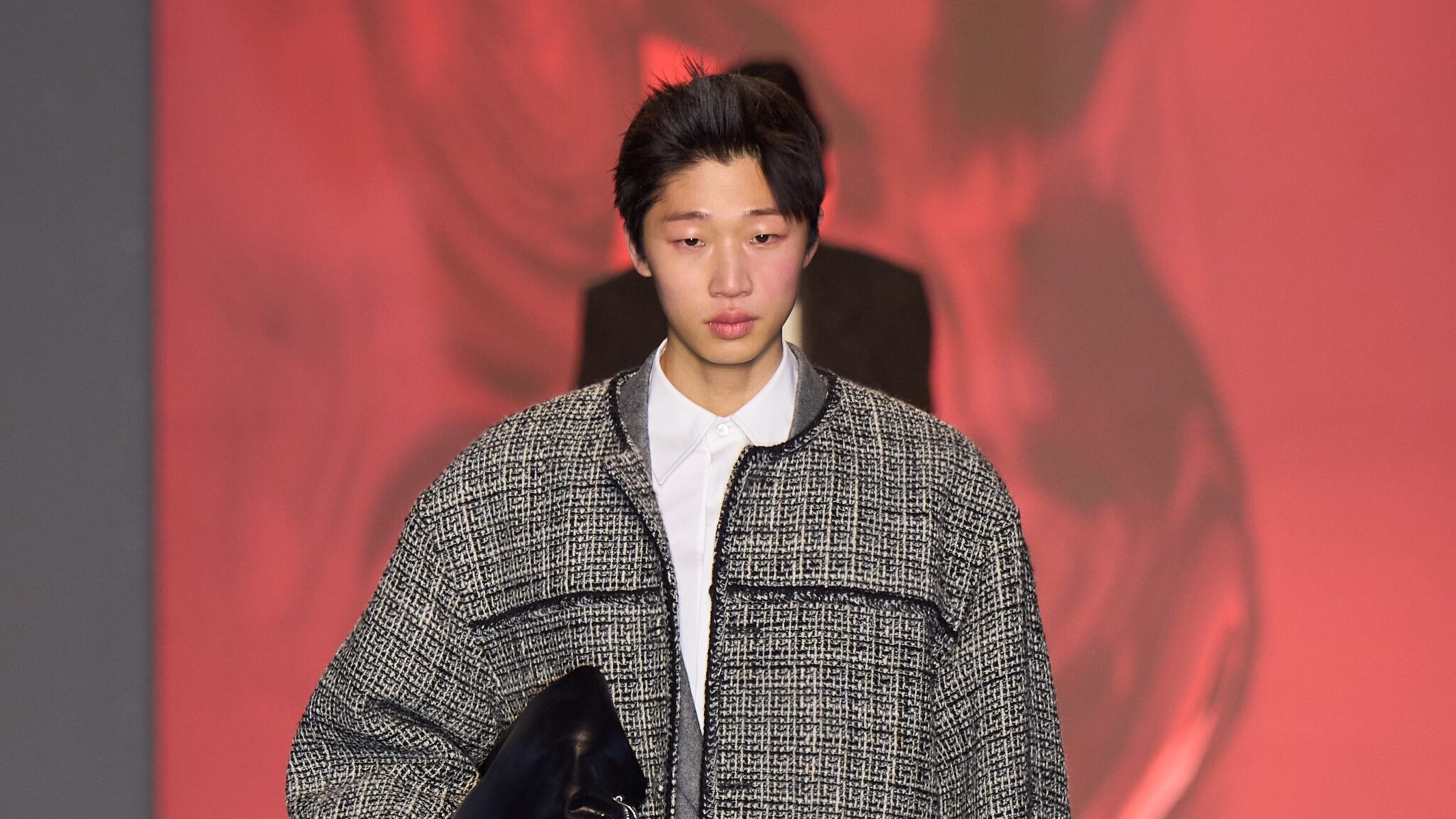At the top of the runway, a work of art from floor to ceiling in swirling shades of red. The painted background was a two-dimensional variation on the reflective abstract sculpture ‘ruby ear’ that has become a fixture in Wooyoungmi boutiques from Seoul to Paris. For Madame Woo, it means being “open-minded,” and more precisely, listening to the sounds of cities with the wisdom and compassion derived from Buddhist philosophy. You feel that the designer observes things and people with her senses stimulated, and in this way she creates collections that come into contact with countless cultural references through time and at the same time project a personal and ultra-contemporary perspective.
The main thread this season has been an exploration of how Seoul is perceived by both locals and people who have never been there. But instead of obvious tropes, the collection created composite identities that were intriguingly nuanced. The opening look consisted of an office worker’s suit (only the fit was more relaxed), topped with an oversized workwear jacket (only the fabric was a nice bouclé). There were several of these tactile tweeds, each as a slouchy blouson or down jacket. In fact, many of the looks had an elevated twist on functional basics – see the chore coat in lush blue velvet with braided trim, or alternatively a uniform jacket in fine brushed suede, with ‘PariSeoul’ patches emblazoned across them as a distinguishing mark. In a similar vein, pieces were taken from scouting and school uniforms, which looked believably smart when paired with a fitted blazer. And the big unit, denim, always stood out for flattering cuts and lived-in washes – so good that they should become a new go-to category, Wooyoungmi.
While ideas about dress codes often feel rigid, the lineup was a testament to their fluidity. This wasn’t the first time we saw brands remixing bourgeois and uniform elements with youthful freshness. But to Madame Woo’s credit, shiny tracksuits and suits with overskirts reflected the dynamic style energy seeping through Seoul, even if the overall demeanor felt controlled. Throughout the collection, ingenious interpretations of Bojagi, the Korean art of tying knots, were integrated into both hoodies and hats. Madame Woo noted how she exists “on the border between European and Korean, male and female, young and old.” There she connects all these concepts.





